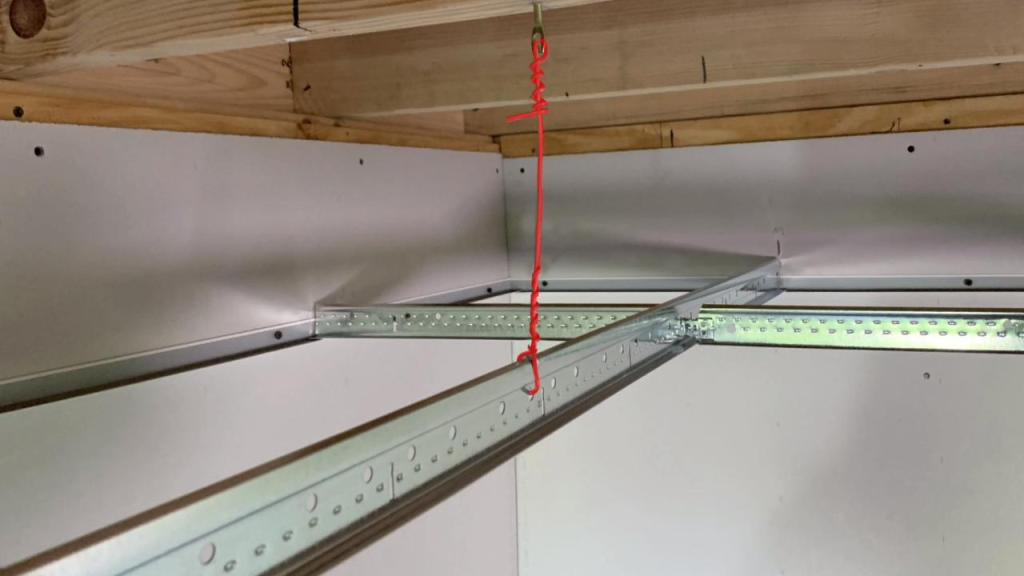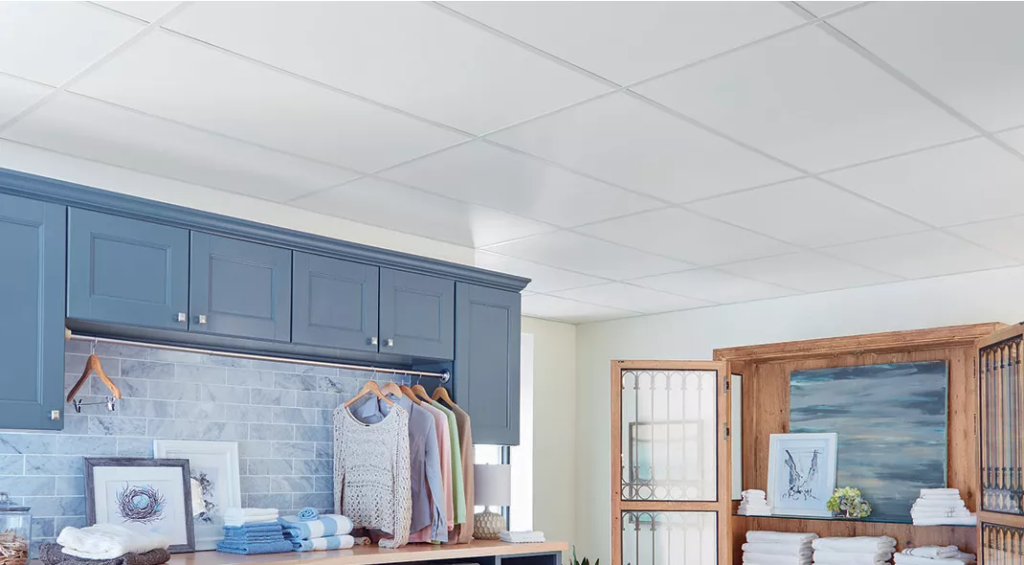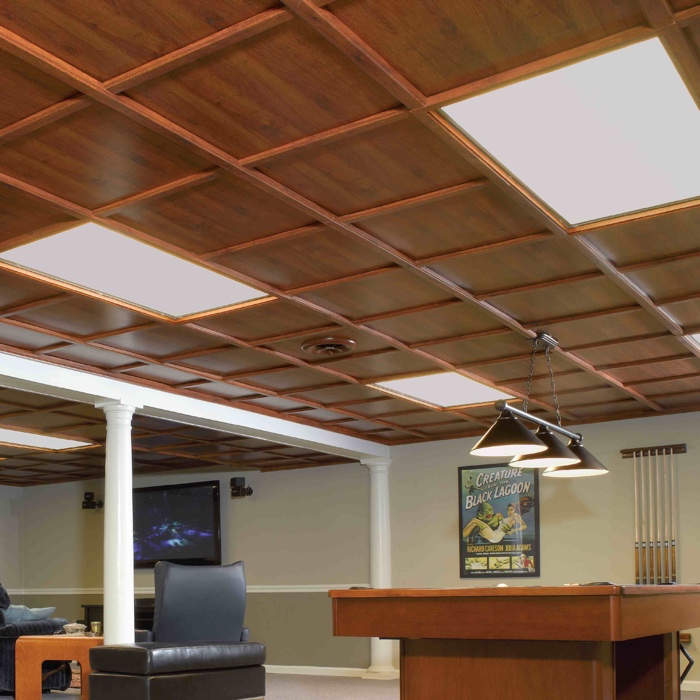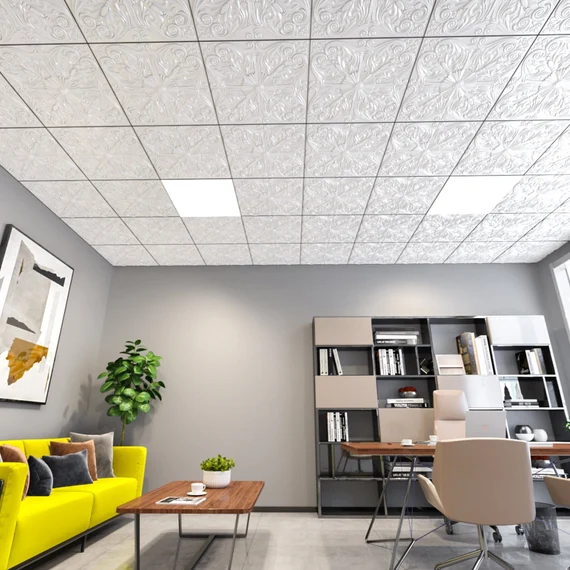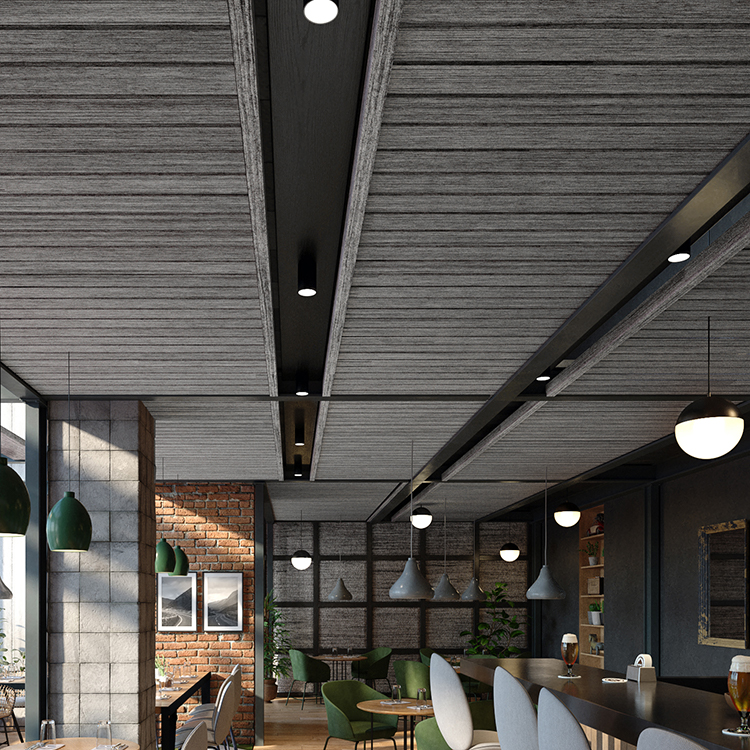When it comes to interior design, ceilings often get overlooked in favor of more prominent features like walls, furniture, or flooring. However, your ceiling is an essential part of your home’s overall aesthetic and can significantly impact the ambiance of a room. One material that has gained popularity for both its aesthetic appeal and functionality is white metal ceiling tiles. In this article, we will explore everything you need to know about white metal ceiling tiles, from their benefits and types to installation tips and maintenance advice.

What Are White Metal Ceiling Tiles?
White metal ceiling tiles are ceiling panels made from durable metal, typically aluminum or steel, that are coated with a white finish. These tiles come in various styles, including smooth, textured, and patterned designs, making them an attractive choice for a variety of interior spaces. Metal ceiling tiles are known for their robustness, resistance to damage, and aesthetic versatility, offering a modern, elegant touch to both residential and commercial properties.
White metal ceiling tiles are especially popular for their clean, bright appearance, making them a great choice for spaces that need extra lighting or a fresh, sophisticated feel. These tiles are commonly used in kitchens, bathrooms, living rooms, offices, restaurants, and even commercial settings like retail stores and hospitality spaces.
The Benefits of White Metal Ceiling Tiles
White metal ceiling tiles come with a host of benefits that make them an appealing choice for a wide range of design projects. Here are some of the main advantages:
1. Durability
One of the standout features of metal ceiling tiles is their exceptional durability. Unlike traditional materials like drywall or plaster, metal tiles are highly resistant to wear and tear. They won’t crack, warp, or peel over time, ensuring that your ceiling remains in top condition for many years. This durability makes them ideal for high-traffic areas or spaces with varying temperature and humidity levels, such as kitchens or bathrooms.
Read too: Kitchen Lighting For A Vaulted Ceiling: Illuminating Your Space with Style and Functionality
2. Aesthetic Appeal
White is a neutral color that complements virtually any design style. Whether you’re going for a modern, industrial, minimalist, or even traditional look, white metal ceiling tiles can effortlessly blend in and enhance the space’s overall aesthetic. The bright, reflective nature of white also helps make smaller rooms appear more spacious and airy, adding to the overall ambiance.
3. Easy to Maintain
Maintaining white metal ceiling tiles is relatively easy compared to other materials. They don’t accumulate dust, grime, or stains as quickly as other surfaces, and if they do need cleaning, a simple wipe with a damp cloth is usually sufficient. Unlike painted drywall, metal tiles are less likely to absorb moisture, which means they are less prone to mold and mildew growth, particularly in damp areas like bathrooms.
4. Fire Resistance
Metal tiles are inherently fire-resistant, which can enhance the safety of your space. While no material is completely fireproof, metal ceilings are less likely to catch fire or contribute to the spread of flames compared to other materials, such as wood or fabric. This makes them an ideal choice for areas where fire safety is a concern, such as kitchens or commercial spaces.
5. Noise Control
Another important benefit of white metal ceiling tiles is their ability to reduce noise levels. Metal tiles can act as sound dampeners, especially when installed with soundproof backing materials. This is particularly valuable in commercial spaces like offices or restaurants, where noise control is important for comfort and productivity. The tiles can help absorb and reduce sound, creating a more peaceful environment.
Types of White Metal Ceiling Tiles
There are various types of white metal ceiling tiles to choose from, each offering unique aesthetics and functionality. Here are some common types:
1. Smooth Finish Ceiling Tiles
Smooth finish metal ceiling tiles are a sleek, modern option for any space. These tiles have a polished surface that gives a clean, minimalist look. They are easy to maintain and provide a contemporary touch to both residential and commercial spaces. A smooth finish also allows for better light reflection, making rooms appear brighter and more spacious.
2. Textured Ceiling Tiles
Textured white metal ceiling tiles feature intricate patterns and designs, adding depth and character to a room. These tiles can mimic the appearance of traditional plaster or tin tiles, giving them an old-world charm. Textured tiles are great for adding a bit of personality to your ceiling without overwhelming the space with bold colors or large fixtures.
3. Patterned Ceiling Tiles
Patterned tiles come in various designs, from simple geometric shapes to more ornate, decorative patterns. These tiles can be used to create a focal point or add visual interest to a room. Depending on the design, patterned tiles can evoke different styles, such as vintage, industrial, or even contemporary. These tiles are particularly popular in restaurants and other commercial spaces looking to create a unique atmosphere.
4. Drop-In Ceiling Tiles
Drop-in metal ceiling tiles are designed for use with a suspended grid system. They fit into the grid and are easy to install or replace. These tiles are often used in offices, schools, and other commercial spaces due to their ease of installation and flexibility. Drop-in tiles are available in both smooth and textured finishes and can be an efficient way to cover a large area with minimal effort.
5. Custom Ceiling Tiles
If you’re looking for something truly unique, custom white metal ceiling tiles are an excellent option. Many manufacturers offer the ability to create bespoke tiles tailored to your specific design preferences. Whether you want to incorporate specific patterns, logos, or branding into the tiles, custom options can help achieve your desired look.
How to Install White Metal Ceiling Tiles
Installing white metal ceiling tiles is a straightforward process, but it’s important to follow proper procedures to ensure a secure and lasting installation. Below are the general steps for installing metal ceiling tiles:
1. Prepare the Area
Before beginning the installation, clear the area of any obstacles and ensure that the ceiling surface is clean and smooth. If you are replacing old ceiling tiles, remove them carefully to avoid damaging the underlying structure. Check for any issues such as water damage, mold, or structural damage that may need to be addressed before installing the new tiles.
2. Measure the Space
Accurate measurements are key to a successful installation. Measure the length and width of the ceiling area to determine how many tiles you will need. Most white metal ceiling tiles come in standard sizes, but you may need to trim some tiles to fit the dimensions of your space.
3. Install the Grid System (If Applicable)
If you’re using drop-in ceiling tiles, you’ll need to install a suspended grid system first. This system provides the framework for the tiles to drop into place. Follow the manufacturer’s instructions to ensure the grid is properly installed and level.
4. Install the Tiles
For drop-in tiles, simply place each tile into the grid. For other types of tiles, you may need to use adhesive or screws to secure them to the ceiling. Make sure the tiles are aligned properly and check for any gaps between the tiles.
5. Finish the Installation
Once all tiles are in place, inspect the ceiling to ensure that all tiles are securely installed and properly aligned. If any tiles are damaged during the installation, replace them promptly. You may also want to add finishing trim around the edges for a polished look.
Maintenance and Cleaning Tips for White Metal Ceiling Tiles
To keep your white metal ceiling tiles looking fresh and clean, regular maintenance is important. Here are some tips for cleaning and maintaining your tiles:
- Dust Regularly: Use a soft microfiber cloth to gently dust the tiles and prevent the buildup of dirt and grime.
- Wipe Down with a Damp Cloth: For more thorough cleaning, use a damp cloth with a mild cleaning solution to wipe down the tiles. Avoid using harsh chemicals or abrasive scrubbers that could damage the surface.
- Check for Damage: Periodically inspect your tiles for any signs of damage, such as dents or rust. Address any issues promptly to maintain the integrity and appearance of your ceiling.
Conclusion
White metal ceiling tiles offer a stylish, durable, and functional solution for a variety of spaces. Whether you’re looking to update your home, office, or commercial property, these tiles provide an easy way to enhance the look and feel of your space. With their wide range of styles, easy maintenance, and long-lasting durability, white metal ceiling tiles are an excellent choice for any ceiling project.



